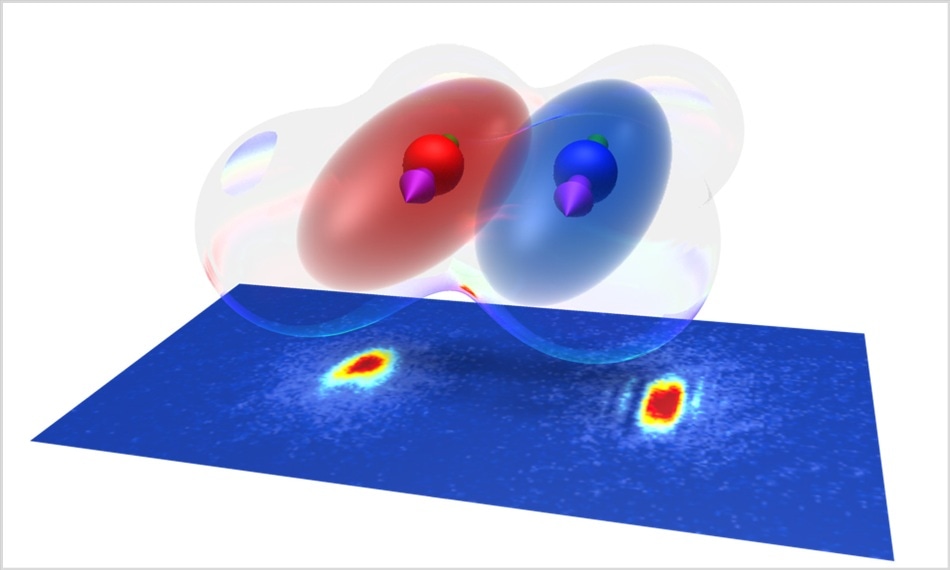Nov 26 2018
The experimental analysis of ultracold quantum matter enables the study of quantum mechanical phenomena that are normally hard to access.
 The Bose-Einstein condensates of Erbium and Dysprosium coexist and interact with each other. (Image credit: Uni Innsbruck)
The Bose-Einstein condensates of Erbium and Dysprosium coexist and interact with each other. (Image credit: Uni Innsbruck)
At present, for the first time, a group of researchers headed by the Innsbruck physicist Francesca Ferlaino has been successful in combining quantum gases of the strongly magnetic elements Erbium and Dysprosium and producing a dipolar quantum mixture.
Just a few years back, it appeared impracticable to stretch the techniques of deep cooling and atom manipulation in the ultracold matter to many-valence-electron atomic species. This is because of the increasing complexity in the atomic spectrum and the obscure scattering properties. However, a research team, headed by Ben Lev, in the United States at Stanford University and an Austrian team, led by Francesca Ferlaino, at the University of Innsbruck accepted the challenge and demonstrated quantum degeneracy of rare-earth species, using the strongly magnetic, and rather undiscovered, Dysprosium and Erbium atoms. The focus of Ferlaino’s team was on the analysis of Erbium and the team developed a robust, yet astonishingly simple strategy to create a Bose-Einstein condensate.
We have shown how the complexity of atomic physics can open up new possibilities.
Francesca Ferlaino, Department of Experimental Physics, University of Innsbruck; Institute of Quantum Optics and Quantum Information (IQOQI), Austrian Academy of Sciences.
Studies into magnetic species are gaining impetus across the globe since such atoms were observed to be a perfect platform to produce dipolar quantum matter, where particles interact with each other through an orientation-dependent and long-range interaction as little quantum magnets.
Dipolar quantum matter
In an innovative study reported recently in the Physical Review Letters journal, the Austrian research group has taken a new stride in the area of dipolar matter. They have combined Erbium and Dysprosium and produced, for the first time, a dipolar quantum mixture. “We studied very carefully the atomic spectra of these two species and made plans on how to combine them and reach simultaneous quantum degeneracy”, stated Philipp Ilzhöfer, one of the two leading authors of the paper, “and our scheme worked out even better than expected allowing us to create a system in which Bose-Einstein condensates of Erbium and Dysprosium coexist and interact with each other,” added Arno Trautmann, the other leading author. This progress seems promising to open innovative research boundaries in the area of dipolar quantum matter due to the long-range interaction among the two species.
The study has been performed in a new laboratory at the IQOQI and has been supported by the Austrian Academy of Sciences and an ERC Consolidator Grant. The research has been recommended by the editors of the journal as specifically important, interesting, and well written and has been reported in Physics, an online magazine.